Bengal Cat - Breed Facts & Characteristics
Official name: Bengal
Other names: Leopard, Leo
Origins: United States of America
Hair length
1 out of 5Shedding Level
1 out of 5Grooming needs
2 out of 5Energy level*
4 out of 5Vocal tendencies
1 out of 5Family pet*
5 out of 5Cohabitation with other pets
4 out of 5Can stay alone*
2 out of 5Environment (indoor/outdoor)
4 out of 5
| Male | Female |
|---|---|
| Height | Height |
| 0 - 0 | 0 - 0 |
| Weight | Weight |
| 4 - 6 | 3 - 5 |
| Kitten | Adult |
|---|---|
| 4 to 12 months | 1 to 7 years |
| Mature | Senior |
| 7 to 12 years | From 12 years |
Hair length
1 out of 5Shedding Level
1 out of 5Grooming needs
2 out of 5Energy level*
4 out of 5Vocal tendencies
1 out of 5Family pet*
5 out of 5Cohabitation with other pets
4 out of 5Can stay alone*
2 out of 5Environment (indoor/outdoor)
4 out of 5
| Male | Female |
|---|---|
| Height | Height |
| 0 - 0 | 0 - 0 |
| Weight | Weight |
| 4 - 6 | 3 - 5 |
| Kitten | Adult |
|---|---|
| 4 to 12 months | 1 to 7 years |
| Mature | Senior |
| 7 to 12 years | From 12 years |

Find the right product for your cat
Answer a few questions about your cat
Get their tailored food recommendation
Support your cat's health with the right diet
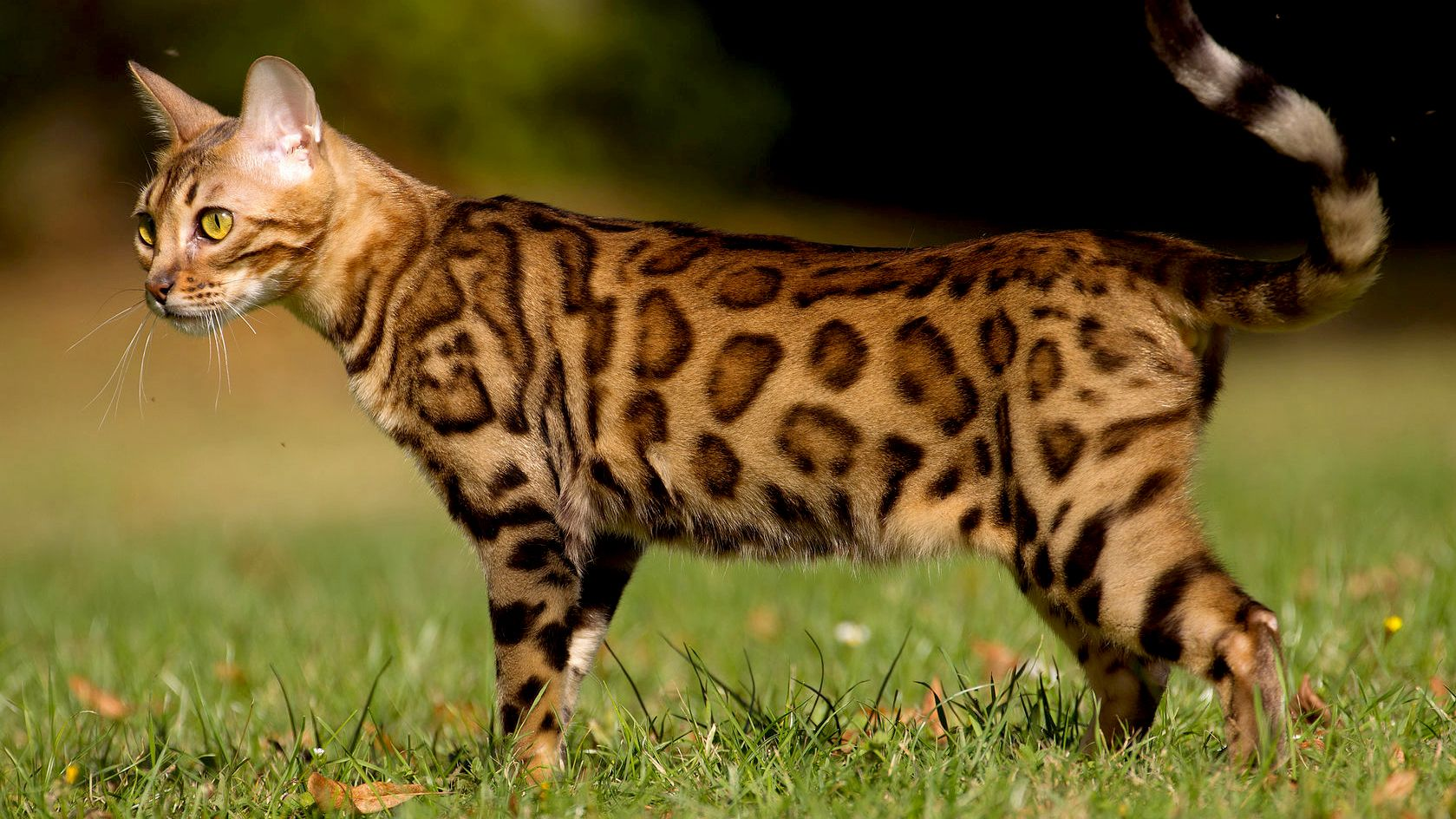
Get to know the Bengal
All you need to know about the breed
If there’s one breed that embodies the moniker “curious cat,” it’s the Bengal. There’s a confidence within them, a desire to go out and explore their domestic surroundings, and with such a brilliant animal in your midst, it’s easy to let the adventure begin. Bengals have a fearlessness that’s fascinating to watch, and they don’t mind the audience.
The best part about having a Bengal cat around? Their fabulously unique rosette-shaped coat. The Bengal is the only breed that’s adorned with these uncommon graphics - shaped like those on their Leopard, Jaguar, and Ocelot cousins. The Snow Bengal is another variation of the breed, which is exceptional colouration that’s mostly white - think mini Snow Leopard! It’s a recessive colourpoint gene that makes for the white or light brown pattern, a very unique motif indeed.
The fur of the Bengal breed can also be marbled or speckled, with its plush thickness another signature trait; whatever the form, it’s incredible to behold.
If you value having a cat with off-the-charts energy, this is your breed. In fact, the Bengal is known to be kitten-ish even into their senior years. The unique cross-breeding of a domestic cat with one that calls the jungle home isn’t lost on this feline. They are unusually agile and athletic, and very strong yet graceful. For the highly desirable Bengal, words like magnificent, wondrous, and striking definitely apply.
The Bengal cat is known oddly enough for being very drawn to water, sometimes coming into the shower with family members or gazing upon water being run for cooking, bathing, brushing teeth, or even the mere washing of hands.
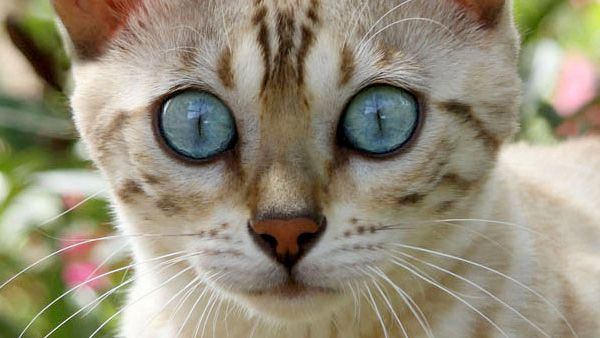
2 facts about Bengals
1. Circa 1963
One of the most recent breeds, the Bengal cat was only developed in 1963 and granted experimental status by the International Cat Association in 1983. The breed was then granted full status in 1991.
2. Teach them a trick or two
Don’t think it’s only dogs that can learn tricks: This very smart cat can too. The Bengal can be taught sit, stay, paw, and even more complex tasks like fetch. So good at them, you’ll soon be wondering who is testing whom...
History of the breed
The Bengal cat takes their name from the Bengal tiger since they have a coat that resembles their distant cousin. Truth be told, the domestic breed does descend from the wild: The Bengal entered the domestic domain in 1963 after being developed by Jean Mill, an avid cat breeder from Arizona. The fan of all things feline cross-bred an Asian leopard cat with her own black domestic tomcat. The resulting Bengal had a housecat disposition and jungle cat-like athleticism.
Mill then further bred the first female kitten, producing litters from there. The Bengal was then developed at the University of California at Davis when Mill assisted in the breeding of eight kittens with an Abyssinian Burmese and Egyptian Mau.
The Bengal breed has now become much more domesticated but also a prized possession, known in feline circles as the “Rolls Royce” of cats.
The International Cat Association adopted the breed in 1983, but granted it experimental status only. The Bengal was then given full status in 1991, and in 1999 recognised as an official breed by Federation Internationale Feline, a widely lauded federation of cat registries.
From head to tail
Physical characteristics of Bengals
1.Ears
2.Head
3.Body
4.Tail
5.Fur
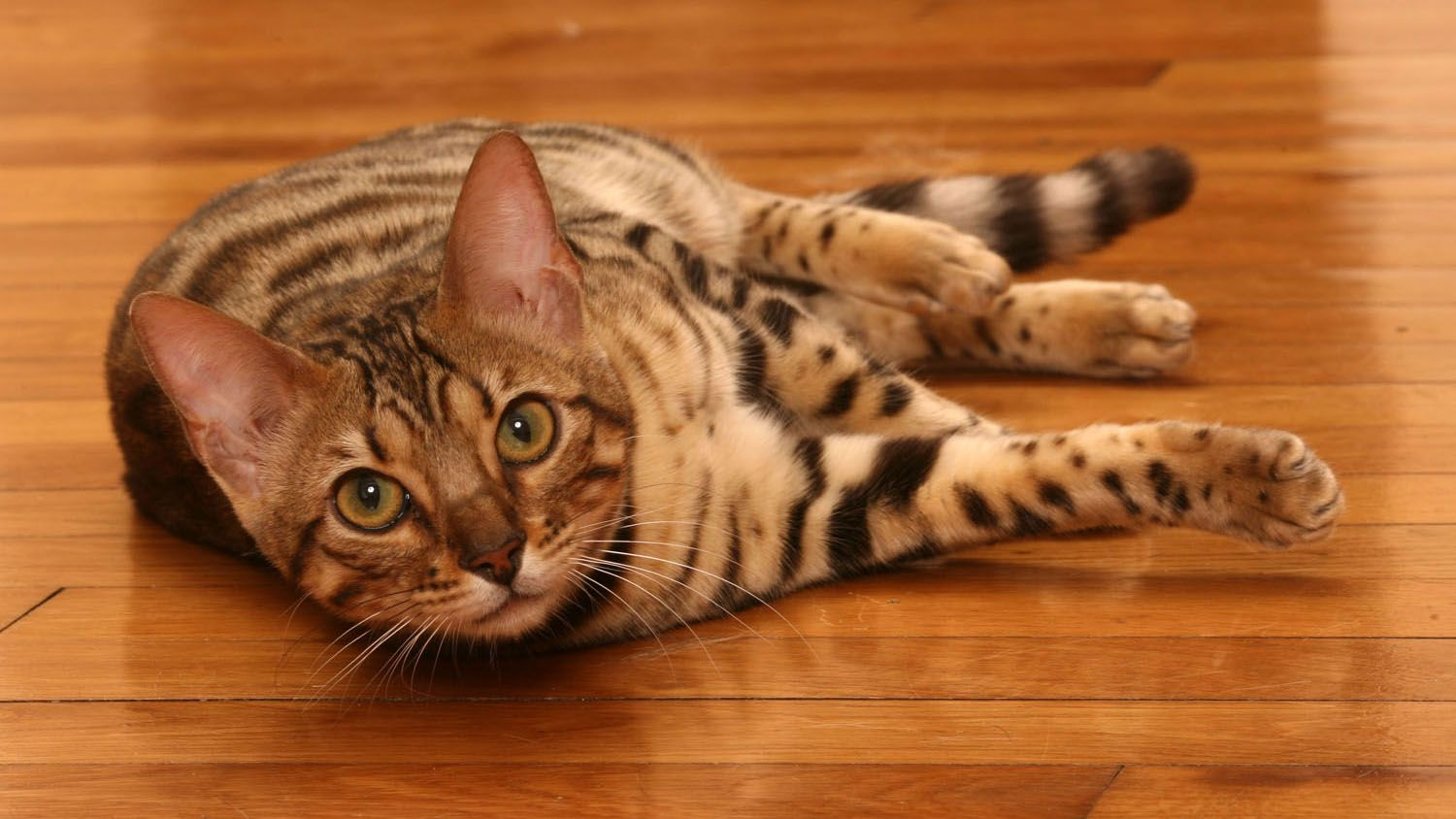
Things to look out for
From specific breed traits to a general health overview, here are some interesting facts about your Bengal
Likes to climb - beware treasured chandeliers
With the jungle as their ancestral home, you can see why Bengals like to climb as high as possible - often to the highest point in the home. It’s a good idea to put away family heirlooms, expensive lighting, and watch valued furniture. Their athleticism and fearlessness are among the amazing traits the Bengal has. The coolest part: Their very deft paws, able to accomplish a lot of complex tasks. The Bengal has been known to turn light switches on and off!
Guinea pigs of the world, unite!
As great a family pet as they can be, the Bengal breed has a high prey drive - very. Keep in mind that this is only the fourth generation since the breed came to be - four steps away from the wild, that is. When the breed became known (and more popular) in the late 1990s, potential owners had to get a license or permit to own a Bengal. The tendency to go after their own dinner still lingers. Steer the cat clear of small pets like gerbils, mice, or guinea pigs that may be kept in the same household as pets just in case your cat gets any ideas. Know too that your Bengal has deft paws that can perform many tasks - like lifting tops and picking things up!
Calories won’t need to be counted - as much.
Weight is almost never an issue for the Bengal breed. They burn through calories faster than an Olympic athlete with their high activity rate and nonstop approach to life, not to mention their huge curiosity. The best food for Bengal cats is high-quality, containing the essential nutrients and minerals they need to best develop as they grow. Since cats need to eat little and often, feed them several times a day after carefully measuring the allowance. To maintain your Bengal's sleek physique, never overfeed them.
Healthy diet, healthier cat
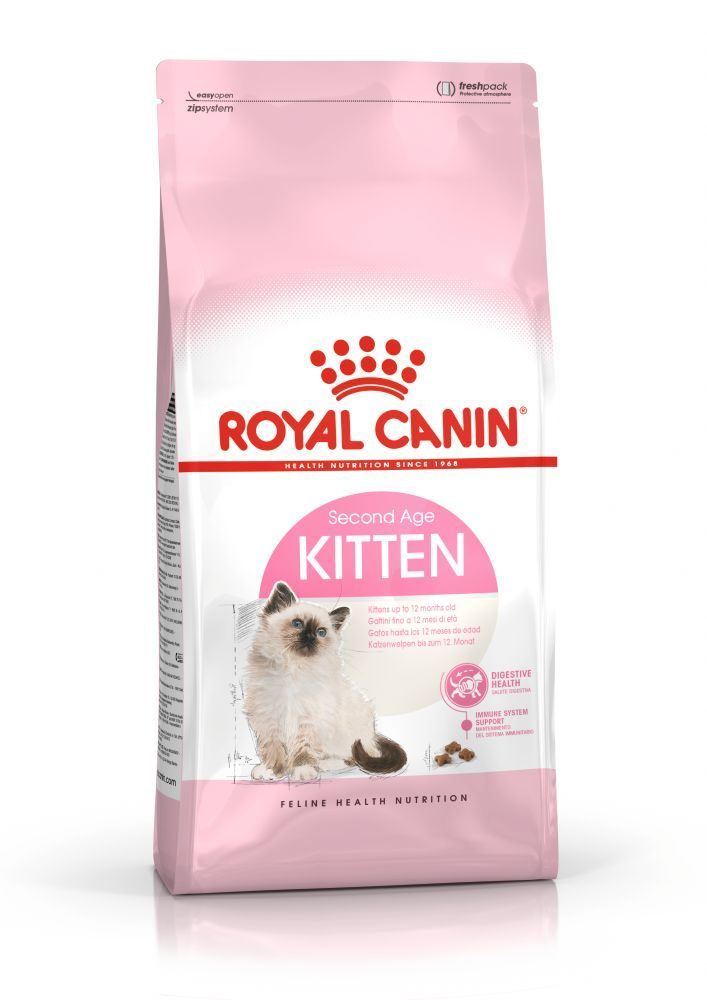
Tailored health nutrition has a fundamental role to play in maintaining the health and beauty of Bengal cats. Food provides energy to help with vital functions and a complete nutritional formula for Bengals should contain an adapted balance of nutrients. Feeding them in this way will offer a diet that’s neither deficient nor excessive, both of which could have adverse effects on your cat’s health. Clean, fresh water should be available at all times to support good urinary regularity. Cats are also naturally adapted to eating small servings - between 7 and 10 times a day. Giving them the recommended daily ration of kibble once a day will let your Bengal cat regulate their own consumption. The following recommendations are for healthy animals. If your cat has health problems, please consult your veterinarian who will prescribe an exclusive veterinary diet.
Growth is an essential stage in a kitten’s life. It is a time of big changes, discoveries, and new encounters. A Bengal kitten’s requirements in terms of energy, protein, minerals, and vitamins, are much more than those of an adult cat. They need energy and nutrients to maintain their body, but also to grow and build it. A kitten’s growth comes in two phases:
Construction
From birth to 4 months
Weaning is the transition a kitten makes from liquid - or maternal milk - to solid food. This period naturally corresponds to the time when they cut their milk teeth, at 3 to 6 weeks old. At this stage, kittens are not yet able to crunch so a soft meal (rehydrated kibble or an adapted wet food) helps bridge the gap between liquids and solids.
Between 4 and 12 weeks after birth
The natural immunity a kitten receives from the mother’s colostrum - or first milk - decreases while the kitten’s immune system gradually develops. This critical time, called the immunity gap, requires a complex of antioxidants, including vitamin E, to help support their natural defences. Kittens go through an intense and particularly delicate period of growth during which they’re prone to digestive upset. Their diet at this time should not only be rich in energy to meet their essential growth needs but should also contain highly digestible protein to cater to their digestive system that’s still maturing. Prebiotics, such as fructo-oligosaccharides, can also support their digestive health by helping to balance intestinal flora. The result? Good stool quality, all the time. The kitten’s food should contain omega 3 fatty acids - EPA-DHA - which helps support the proper brain development.
Consolidation and Harmonisation: from 4 months to 12 months
From the fourth month, a kitten’s growth slows down, so a food lower in fats is recommended. This is particularly important after a cat is sterilised. Between 4 and 7 months, a kitten’s milk teeth fall out and are replaced by permanent ones. When the adult teeth have come through, a kitten needs to eat kibble that’s big enough so they’re encouraged to crunch. Until they’re 12 months old, a Bengal kittens’ immune system is still gradually developing. A complex of antioxidants, including vitamin E, can help support their natural defences during this time of big changes, discoveries, and new encounters. The digestive system matures progressively, with digestive aptitudes reaching full maturity toward twelve months of age. A Bengal cat is then able to consume adult food.
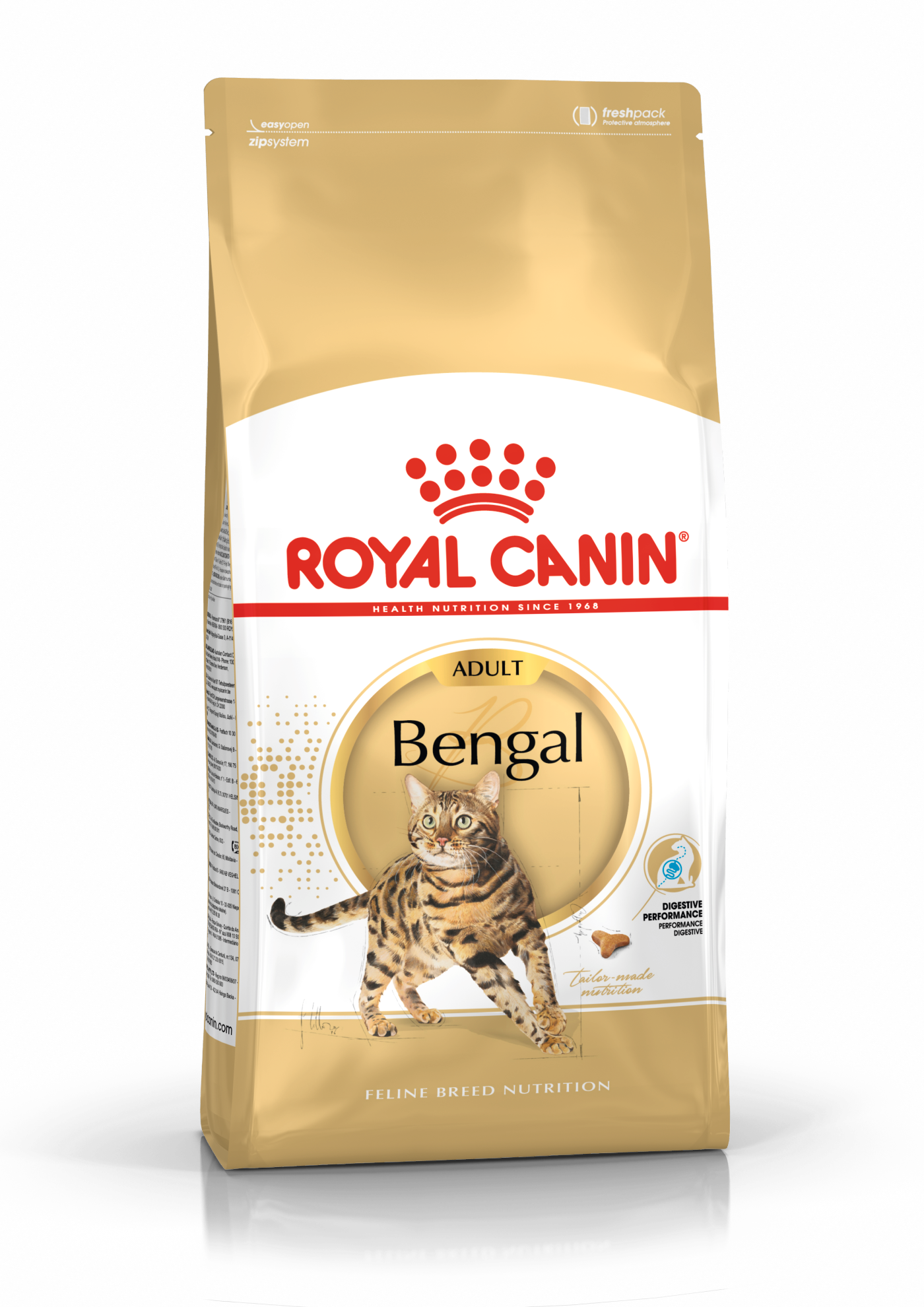
On top of maintaining a healthy urinary function as for all cats, the main nutritional goals for adult Bengals are:
Contributing to maintaining optimal muscle mass for this lively cat, thanks to high-quality protein and a moderate fat content
Supporting optimal digestion and balancing intestinal flora by using highly digestible proteins and prebiotics
Helping to preserve the health of their skin and the glossiness of their short coat, with the enriched addition of targeted nutrients, such as amino acids, vitamins, and omega-3 and omega-6 fatty acids
Supporting good oral hygiene thanks to a kibble shape that’s easy to grab and a texture that encourages chewing.
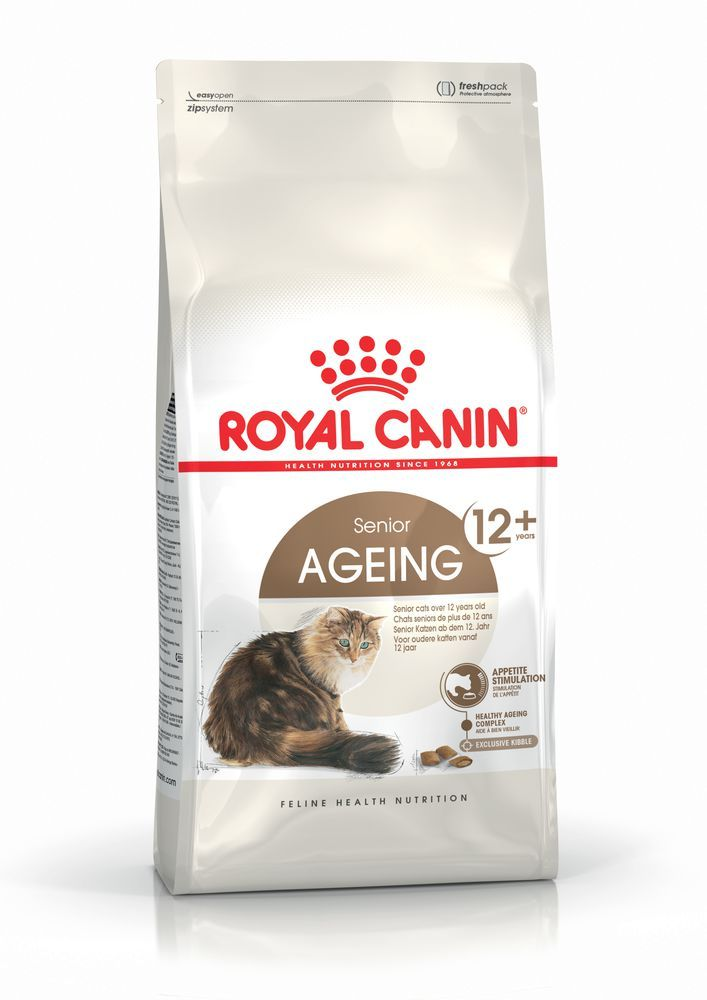
A senior cat - one over the age of 12 - may sometimes have difficulties with absorption. To maintain the weight of the ageing cat and minimise the risk of deficiency, they should be given an extremely digestible food filled with essential nutrients.
As they get older, cats increasingly suffer from teeth problems, and in some senior cats, the sense of taste and smell may decline as well, which leads to a lowered intake of food. To ensure they continue to eat enough, the shape, size, and hardness - meaning texture - of their kibble needs to be tailored to their now potentially more fragile jaw.
Note that the best energy level for any cat still depends on their lifestyle, even those who are ageing. A senior cat that continues to go out regularly will benefit from a diet with a slightly higher fat content. On the other hand, ageing does not reduce an indoor cat’s risk of obesity. Their calorie intake should still be closely monitored. A food with a moderate fat content then may be optimal.
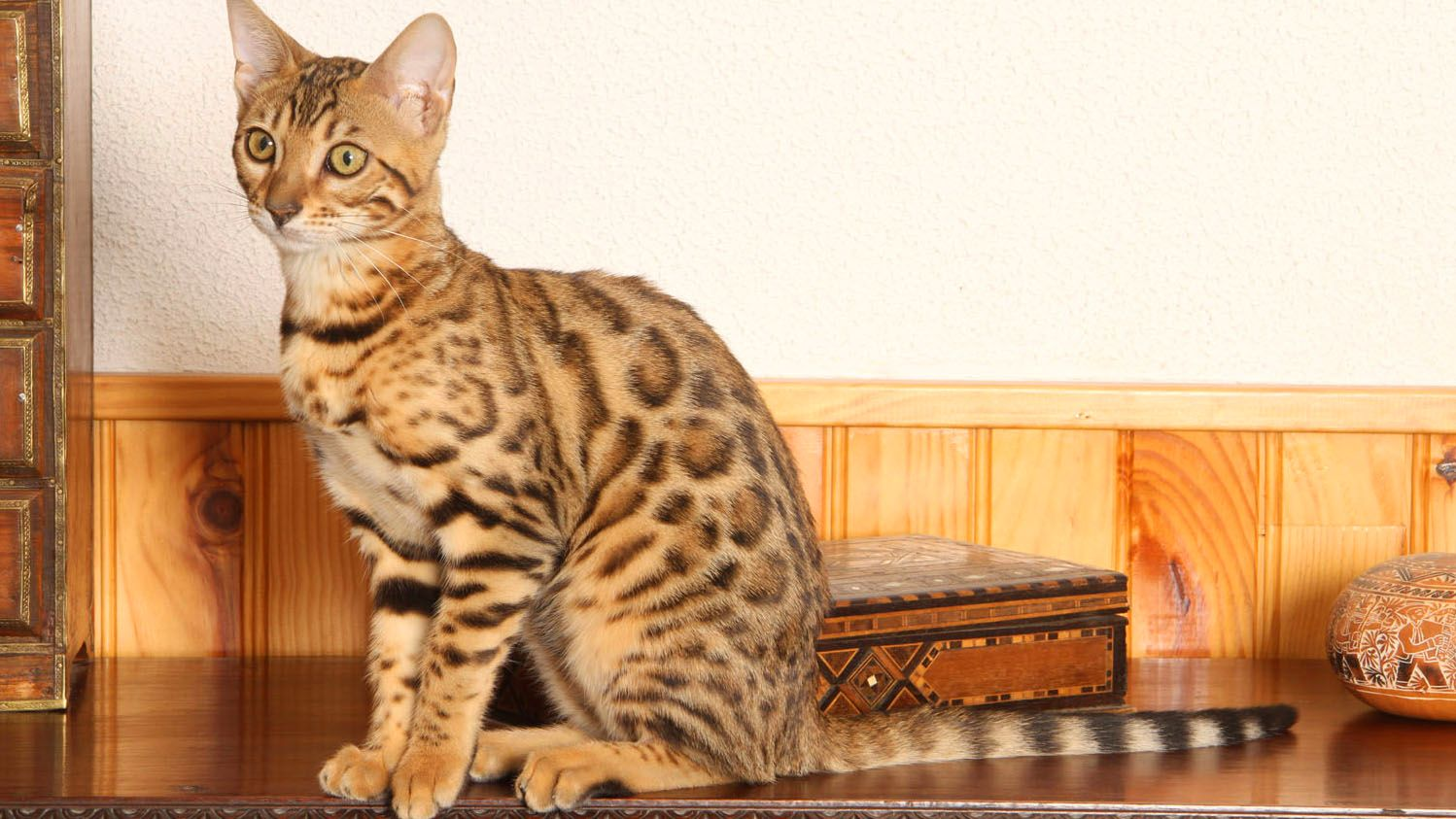
Caring for your Bengal
Grooming, training and exercise tips
Being half jungle cat means agility and strength are a given for the Bengal. A natural athlete, they’ll need space to roam indoors and out, and to follow their natural instincts as they explore the trees and bushes of their domestic domain. Keep an eye on them when outdoors so they don’t wander off, and so they’re safe from predators, traffic, or thieves, a risk for any feline.
Grooming the stunning coat of the Bengal cat will be a pleasure for anyone who enters the world of this dynamic breed. This is one cat that’s relatively easy to take care of - meaning they don’t mind it a bit. Brushing them once a week should be enough and keep the shedding in check, which is low. Bathe your Bengal infrequently as well, in order to best preserve their low-maintenance coat. Clip their nails on a monthly basis for maintenance.
The Bengal cat excels at learning tricks, and is easier to train than many other breeds of cats. They are highly loyal to owners and pleased when part of a group. Extremely alert and attentive, they have even been known to open doors and cupboards with their hand-like paws!
Being half jungle cat means agility and strength are a given for the Bengal. A natural athlete, they’ll need space to roam indoors and out, and to follow their natural instincts as they explore the trees and bushes of their domestic domain. Keep an eye on them when outdoors so they don’t wander off, and so they’re safe from predators, traffic, or thieves, a risk for any feline.
Grooming the stunning coat of the Bengal cat will be a pleasure for anyone who enters the world of this dynamic breed. This is one cat that’s relatively easy to take care of - meaning they don’t mind it a bit. Brushing them once a week should be enough and keep the shedding in check, which is low. Bathe your Bengal infrequently as well, in order to best preserve their low-maintenance coat. Clip their nails on a monthly basis for maintenance.
The Bengal cat excels at learning tricks, and is easier to train than many other breeds of cats. They are highly loyal to owners and pleased when part of a group. Extremely alert and attentive, they have even been known to open doors and cupboards with their hand-like paws!
7/7
All about Bengals
Despite being bred with an Asian Leopard Cat, the Bengal breed is now very domesticated. They are equal parts athlete and lapcat, and are known to be friendly with children, a plus for growing families. And the Bengal personality is almost dog-like: They enjoy taking on tasks and being taught tricks!
Not at all. Ferocity isn’t part of their mojo. The breed is super friendly and always up for playing or just snoozing by one’s side. The Bengal is also known to be great around the little ones. To note: Bengals do have a high prey drive, so keep them out of the way of the family hamster.
Other breeds that might interest you
Read more on this topic
Sources
- Veterinary Centers of America https://vcahospitals.com/
- Royal Canin Cat Encyclopaedia. Ed 2010 and 2020
- Banfield Pet Hospital https://www.banfield.com/
- Royal Canin BHN Product Book
Like & share this page